And Other Poems

The Holy Grail, and Other Poems
Author: Alfred Lord Tennyson, who served as Poet Laureate from 1850 until his death in 1892.
Imprint: Fields, Osgood & Co. Boston, 1870.
MSU Library Call Number: PR5559 .H5 1870
Description
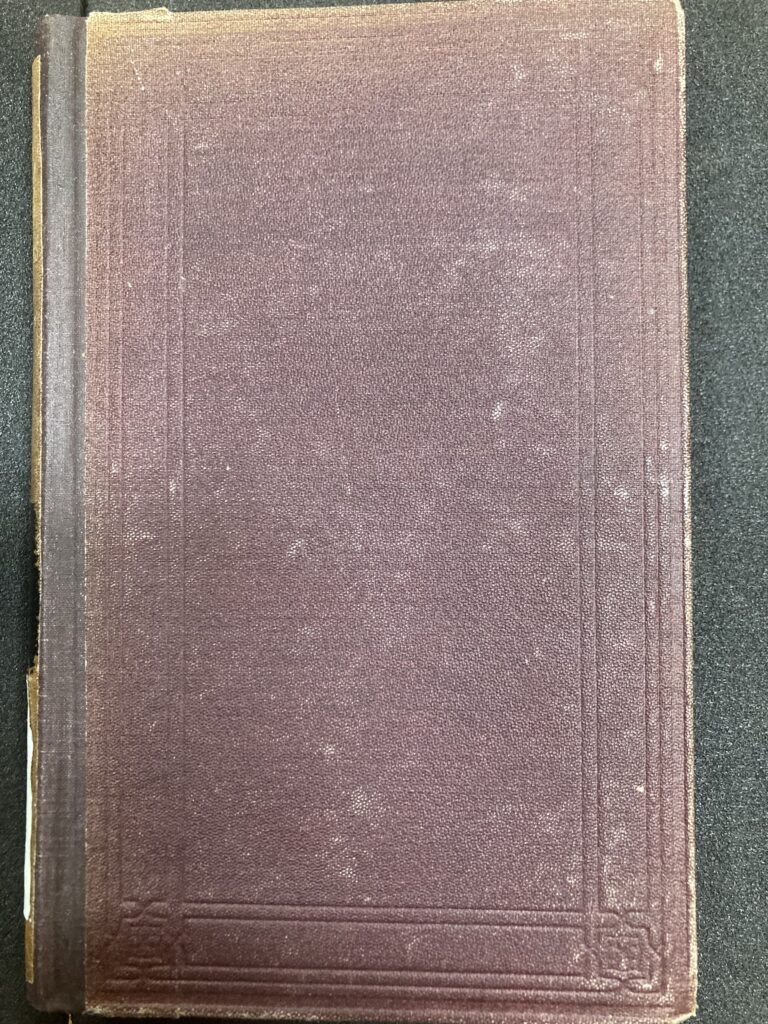

This particular copy is eighteen centimeters long and at first appears to be in relatively good condition overall until you get a closer look at the spine. At some point in this book’s earlier history at Michigan State University it was re-bound but the original leather spine with the title and author were roughly and unevenly cut out and glued to the new spine. Text on the bottom of the original spine is colored over and impossible to read. There is minimal water damage and ripped scraps most likely from a pocket to hold a library slip glued onto the back end page of the book and inside cover.
The Holy Grail and Other Poems is another story by Alfred Lord Tennyson chronicling the events in Camelot regarding King Arthur and the knights in his service and their quest to find the Holy Grail, the cup that Jesus drank from at the last supper. The last half of the book consists of other poems written by Tennyson.
Pre MSU Provenance
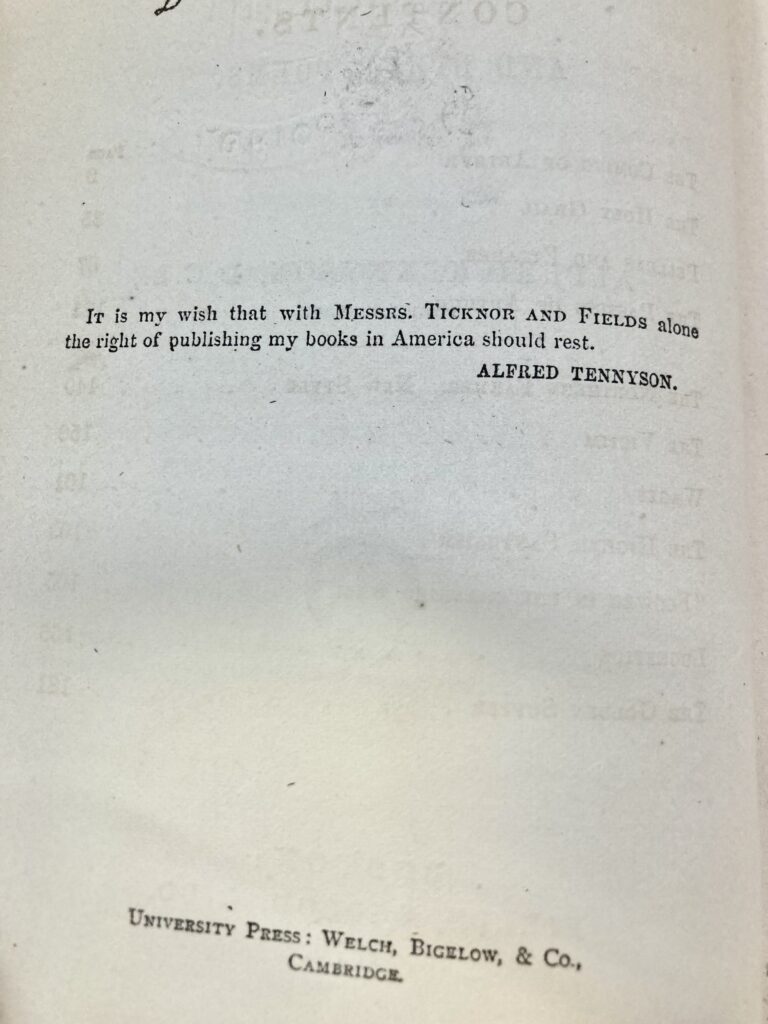
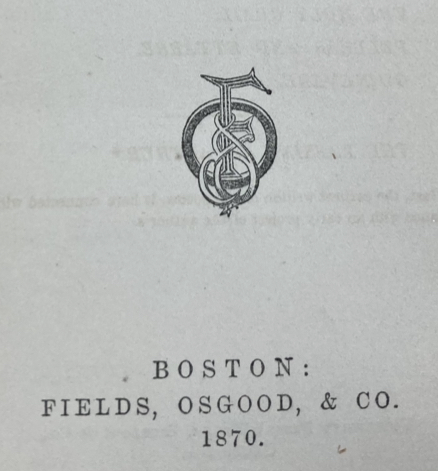
This particular copy of Alfred Lord Tennyson’s The Holy Grail and Other Poems was printed by Welch, Bigelow & and Co. printers operating out of Cambridge, Massachusetts and worked closely with the publishers of the book, Fields, Osgood & Co. operating out of Boston. Lord Tennyson wrote that Ticknor and Fields were to be the sole publishers of his books in America. After researching the history of Fields, Osgood & Co. I learned that the publisher was once called Ticknor and Fields but after William Ticknor’s death James Osgood was given a prominent role at the firm and by the time The Holy Grail and Other Poems was published it was now Fields, Osgood and Co.
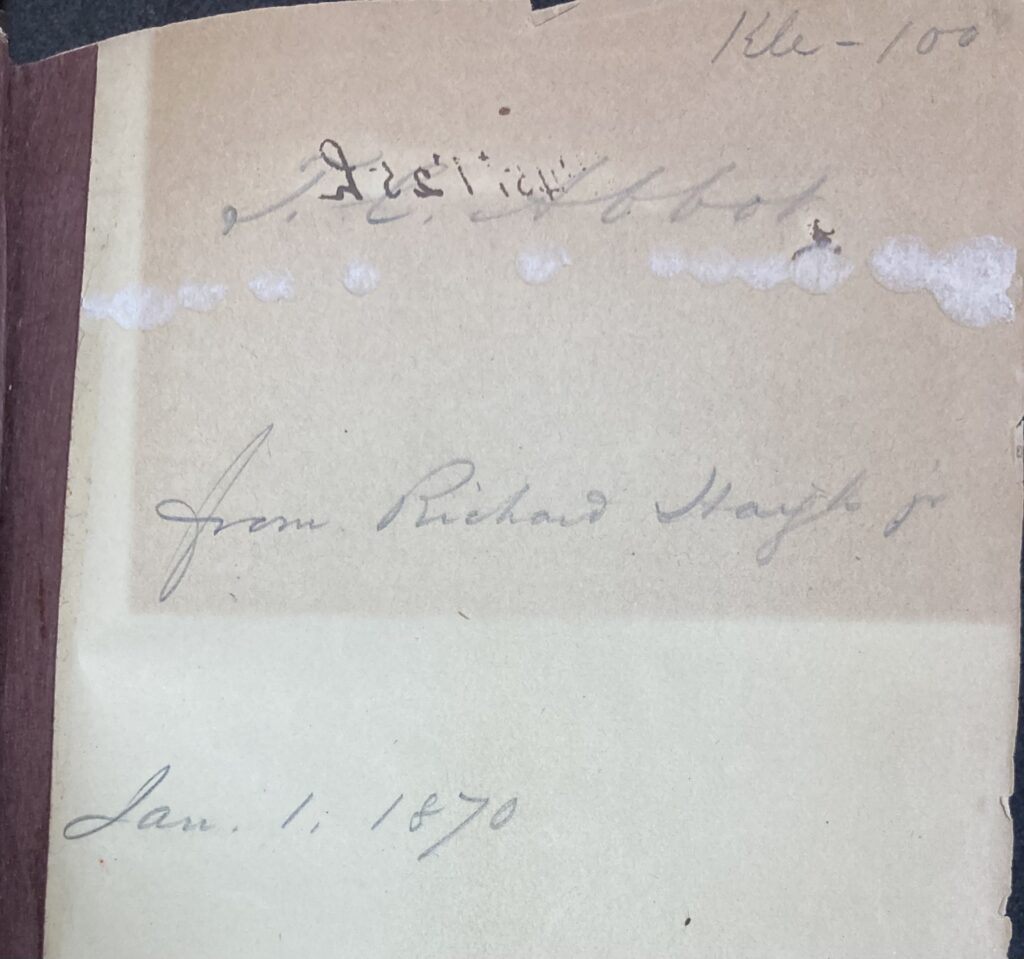
Written on the front end page are the names T. C. Abbot and Richard Haigh Jr. It seems Haigh was the first but brief owner of the book and bought it as a gift for Abbot. Upon investigation, Richard Haigh Jr. was the son of one of the founding men of the city of Dearborn, Michigan. He attended State Agricultural College and graduated in the year 1869. He later became the assistant secretary of the colleges board of trustees in 1870 and secretary in 1871 and it was during this time he gifted the book to T. C. Abbot.
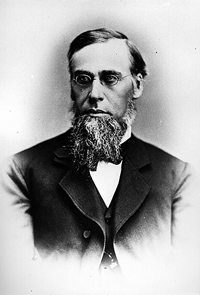
The name T. C. Abbot immediately sounded familiar, I walk down Abbot Road every Tuesday and Thursday to get to class after all. Initially, research into the name brought up a man from the wizarding world of Harry Potter so I kept looking. Sure enough, a man by the name of Theophilus Capen Abbot had a long history at State Agricultural College and is most well known for his role as president of the college from 1862 to 1885. Abbot and Haigh would have served on the board at the same time and with a bit of digging, I discovered a transcript of an old board meeting that both men attended.
Most of the marginalia in this book is thanks to Abbot, corroborated by matching it to his elegant cursive hand writing from his journals in the library’s collection. Most of what he wrote consisted of dates;


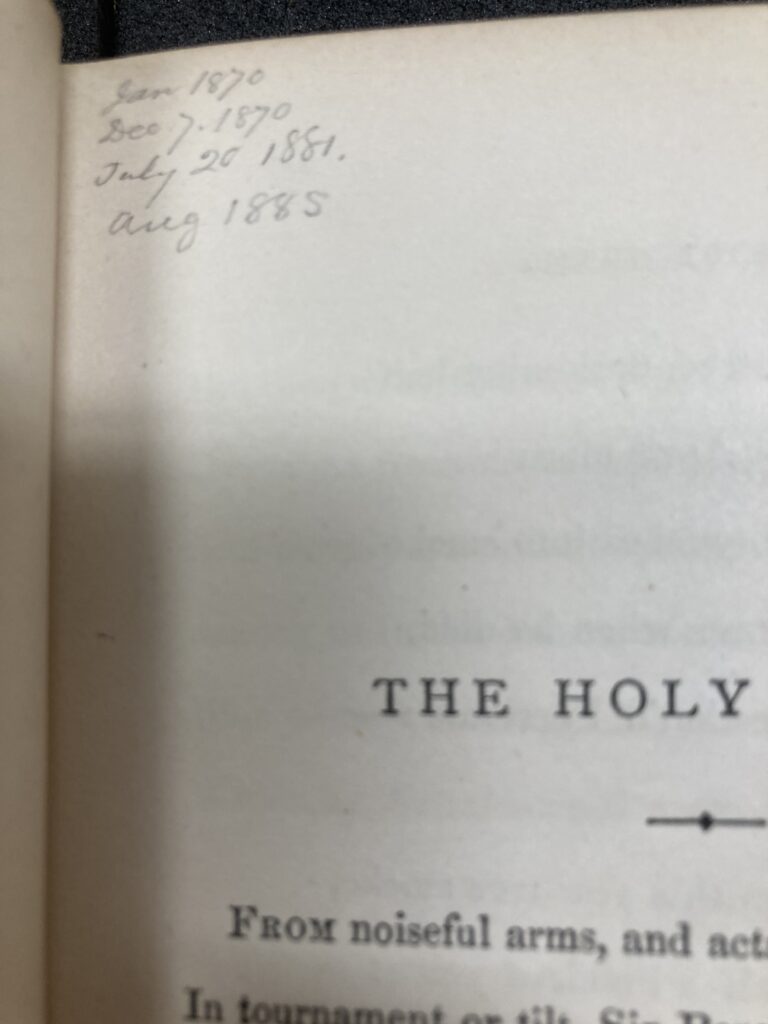
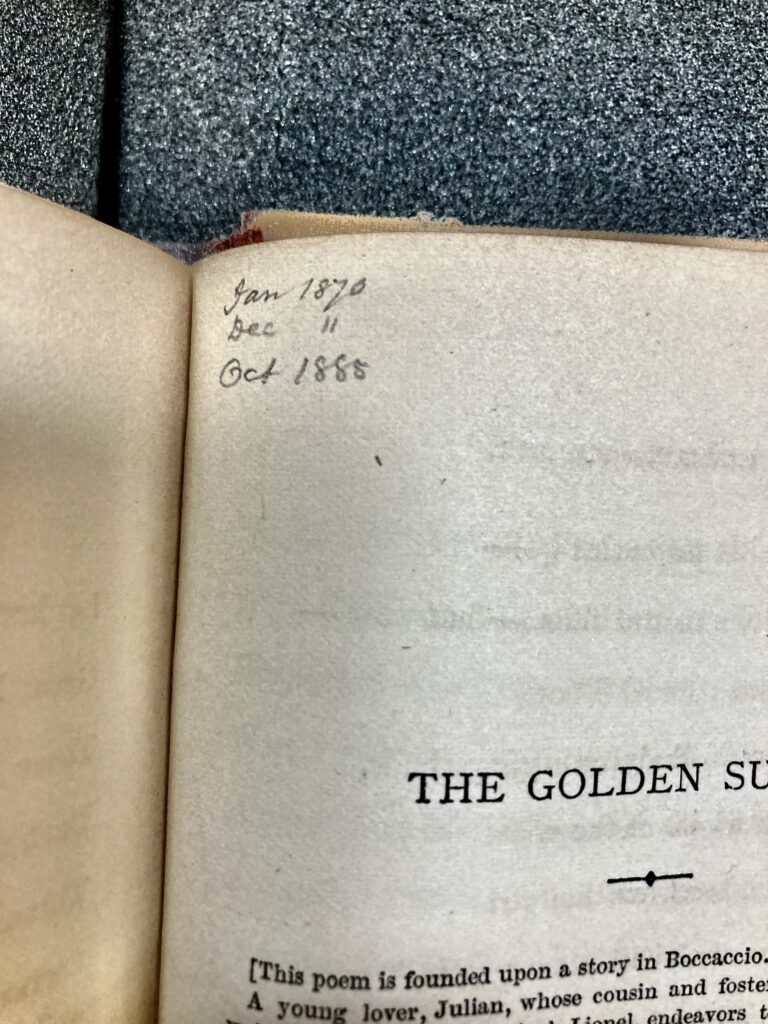
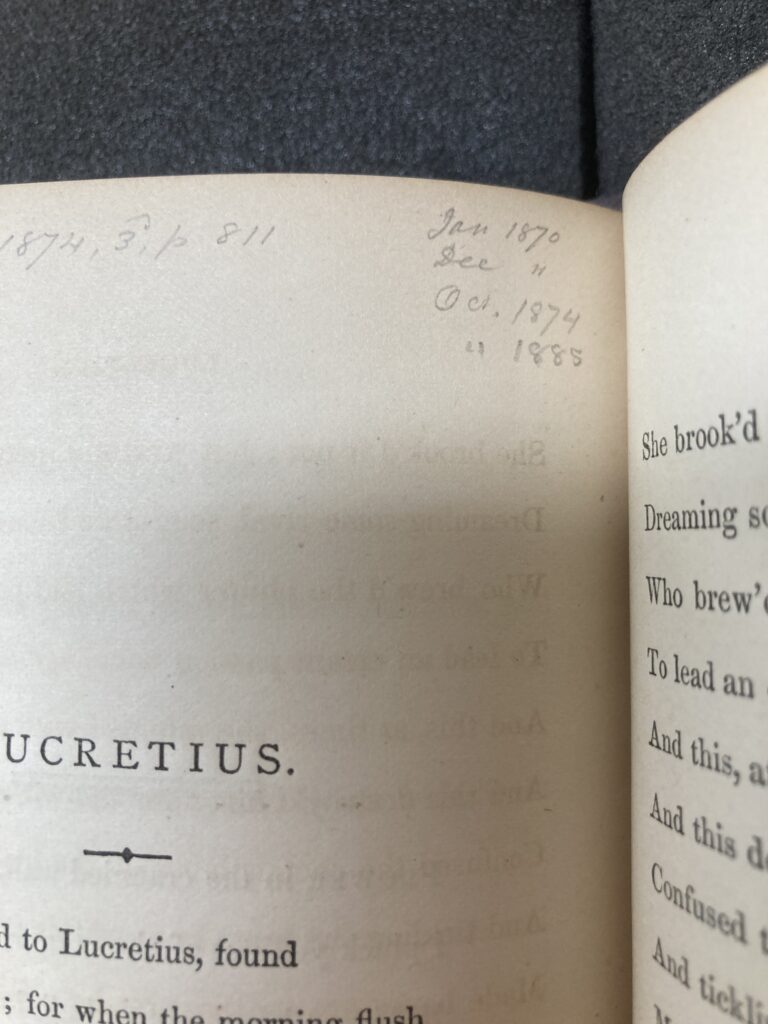
Jan 1, 1870
July, 1870
Dec 7, 1870
Dec 8,1870
July 20,1881
Aug 1885
Sep 1885
Oct 1885
There is no extra context added with these stand alone dates so my theory is that Abbot wrote down the date he started reading a new section of the book where the dates are written in the top left corner. In the order they are written, this makes sense chronologically but the one crux of this theory is that the first date written is underneath Haigh’s address to Abbot in Abbot’s handwriting. I would assume it was the day he received the book from Haigh but the date is January 1, 1870 and the book was published in 1870. Is it unlikely that Richard Haigh Jr. bought a copy of the book the first day of the year it was published and immediately gifted it to Theophilus Abbot? Yes. Is it possible? Since it is not specified anywhere that I can find what day the book was published in 1870 it is in fact possible and it fits nicely in with my theory. The latest date added, October 1885, was the year Theophilus Abbot resigned as the president of State Agricultural College and may be when the book entered the college’s collection since it was the next and final owner.
The other most prominent bit of provenance in the book was Abbot referencing a magazine from the nineteenth century called the Living Age which contained a collection of magazines and articles from other British sources. After hours of searching and following bad leads, I finally discovered the Living Age magazine and managed to find a whole archive of nearly every volume of the magazine. Luckily, Abbot often wrote down the month of the magazine and the page number containing the content he was referencing.
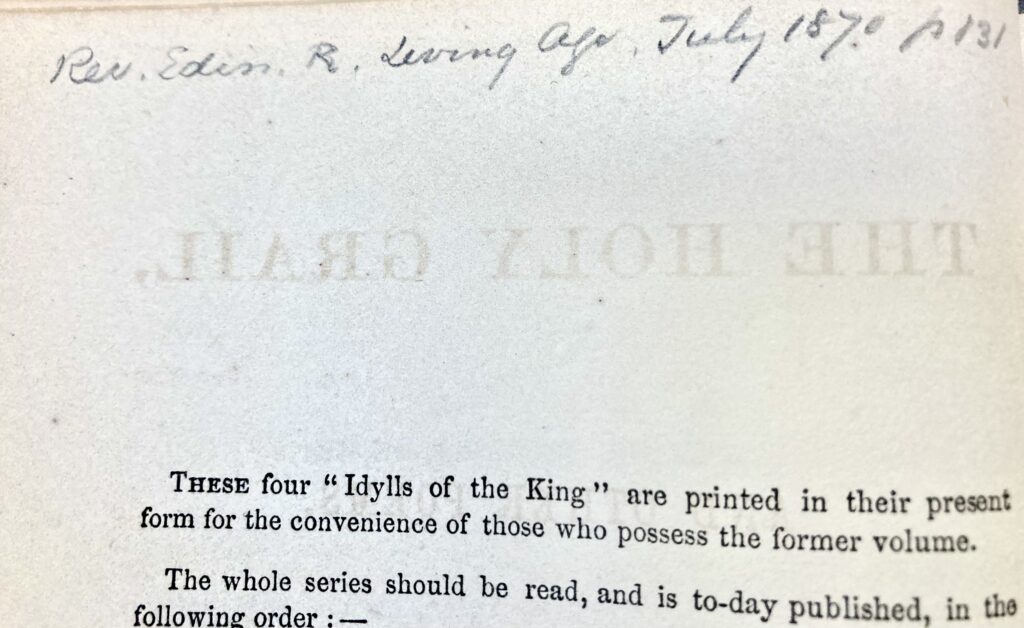
The earliest note he made referencing other work was “Rev. Edin R. Living Age. July 1870 p131.” Many of the bad leads came from searching for a man named Reverend Edin R. Living when in fact a magazine called the Edinburgh Review in the Living Age from July 1870 was a review of Alfred Tennyson’s stories regarding King Arthur. The review makes it clear that The Holy Grail is not their favorite Tennyson story about King Arthur but there is extensive commentary about it and his other stories for nineteen long and small print pages.
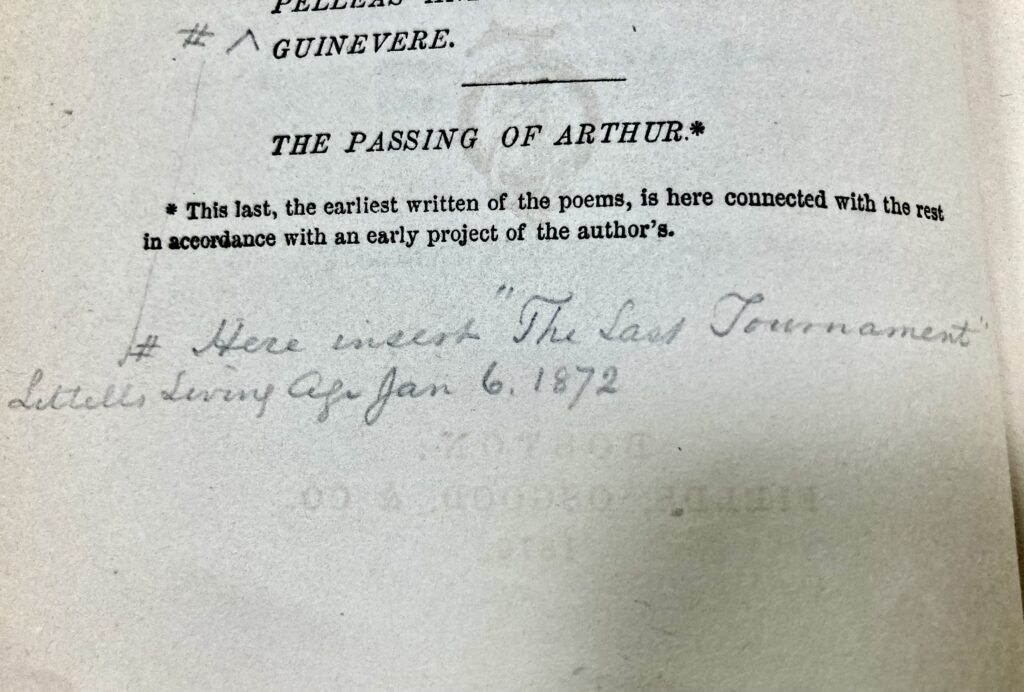
In the second reference to the Living Age, Abbot writes “# Here insert ‘The Last Tournament’ Littels Living Age Jan 6. 1872.” It was only after reviewing the provenance in the book for what I thought would be the last time, did I google Littels Living Age by itself. This helped me find the magazine, finally providing a solid lead and undeading this end. In this marginalia, Abbot seems to be correcting the page of the book that lists other works of Alfred Lord Tennyson on King Arthur. Abbot must’ve thought that the story, The Last Tournament, should be in the list so he made a note which also referenced page 47 of the Living Age where this missing story can be found.
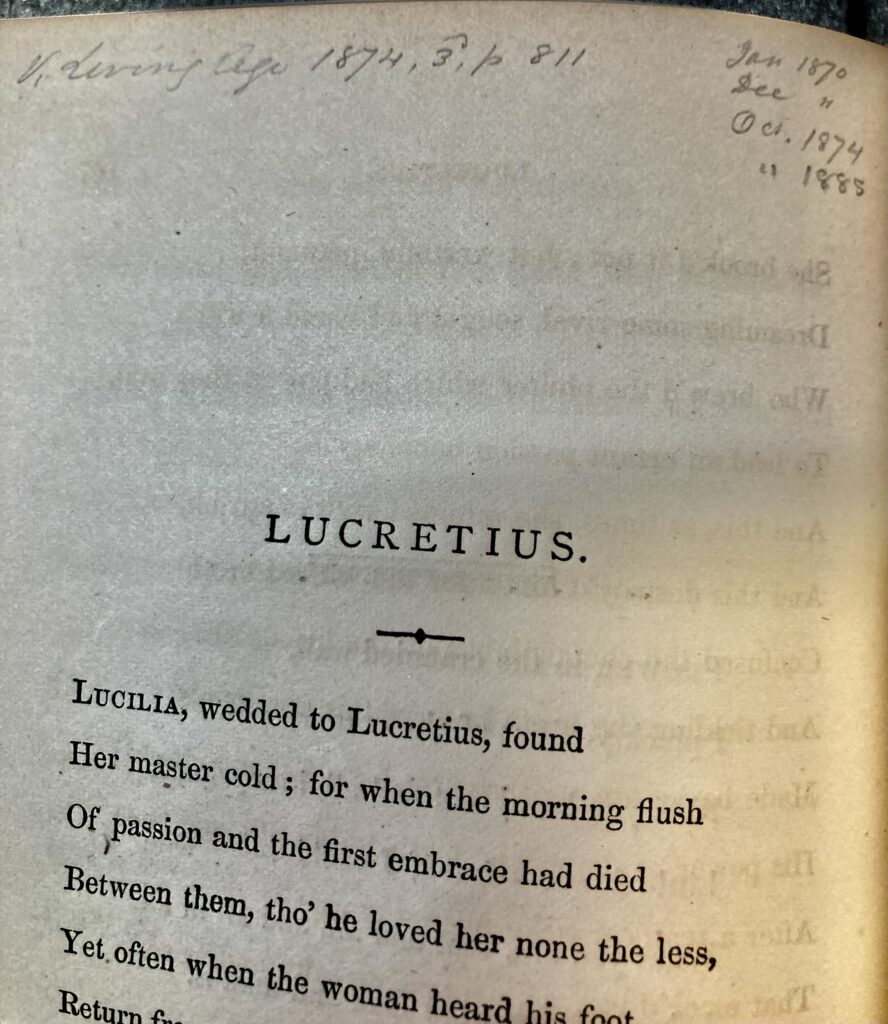
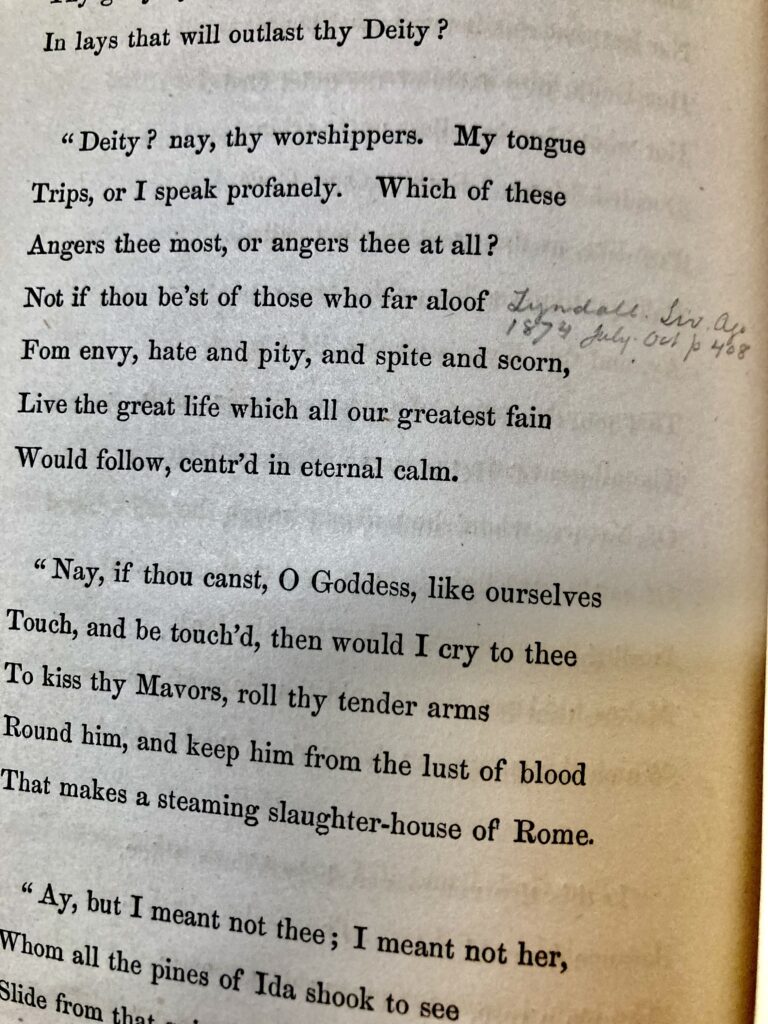
While Abbot references the Living Age two more times, I was not able to track down the specific content he was referencing. I combed through volumes of the Living Age using the information he left behind but after searching and reading what I found that matched his notes, I could not figure out their significance or even be sure that they were correct.
MSU Library Provenance
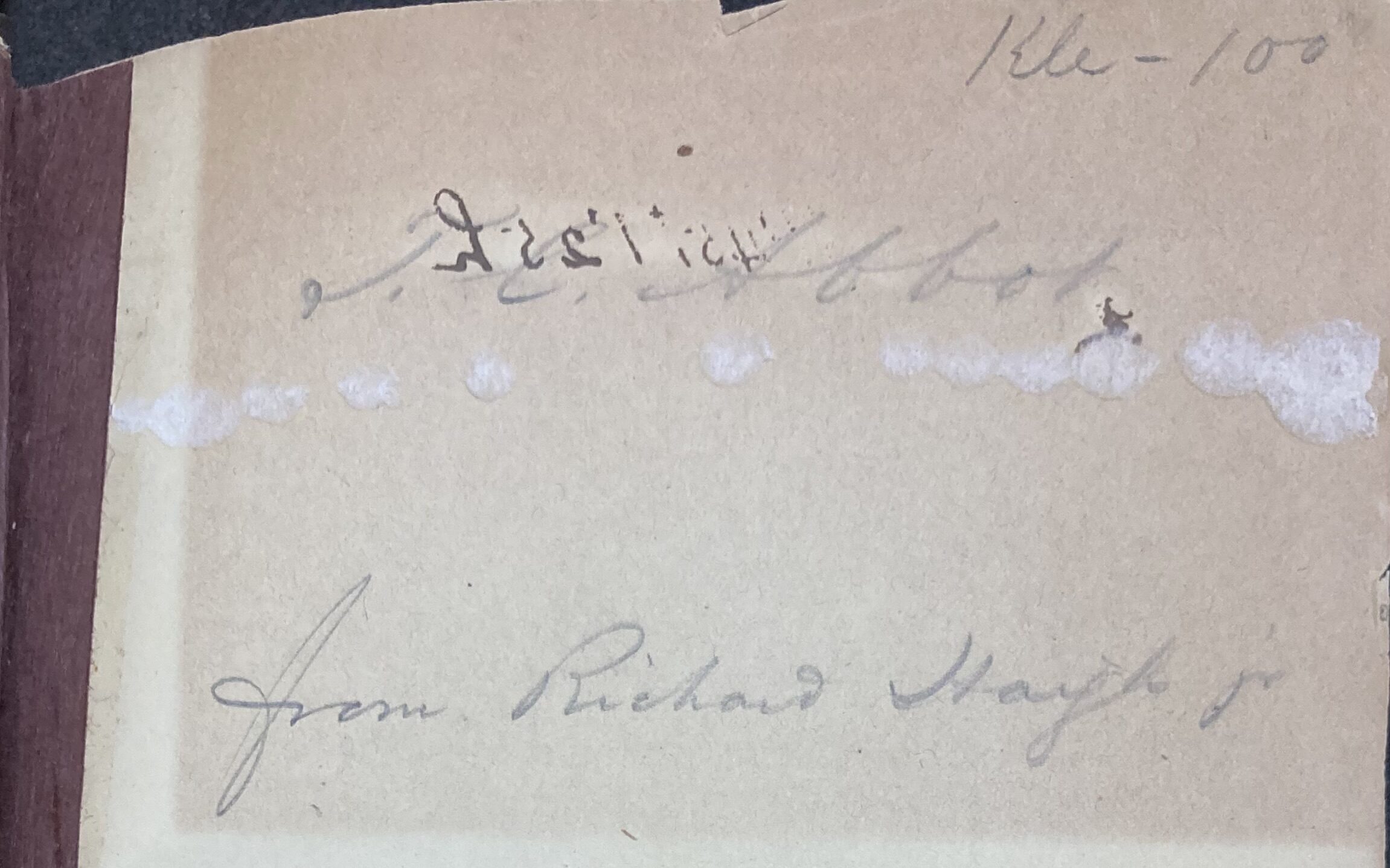

Presumably, the book was donated to the State Agricultural College library after Theophilus Abbot resigned from the presidency. Some provenance from this book’s life at MSU has been either removed or destroyed, such as the missing pocket for library slips in the back or the old bookplate in the front that was replaced, but evidence of use at the library still remains.

The stamp above marks this book as the property of Michigan State Agricultural College. However, the university never went by this full name officially so this stamp is most likely from the years 1909 to 1925 when it went by the name Michigan Agricultural College. After 1925 the university changed its name to Michigan State College of Agriculture and Applied Sciences and a different stamp was used during this period.
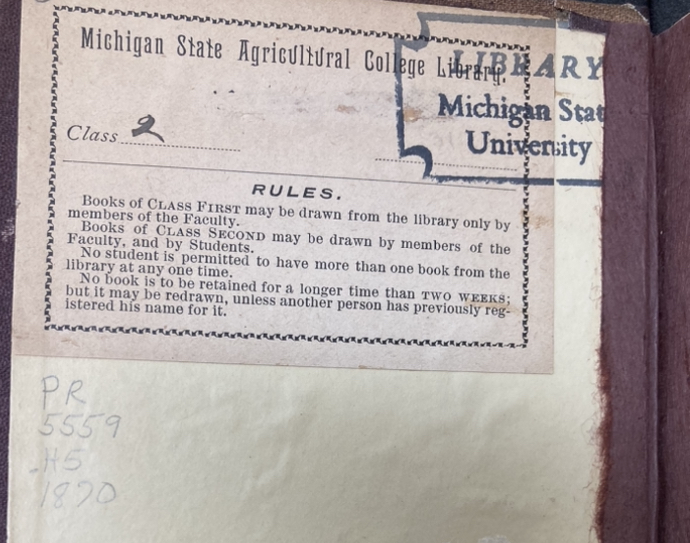
The bookplate also uses the name Michigan State Agricultural College so it is also most likely from around that time. The number two written in it indicates that this book was allowed to be borrowed by both students and faculty and other instructions are printed below that on the book plate. The stamp uses the modern name for the university which changed in 1964 so it was most likely added to the book around that time. The current library call number is also written in pencil below the book plate.
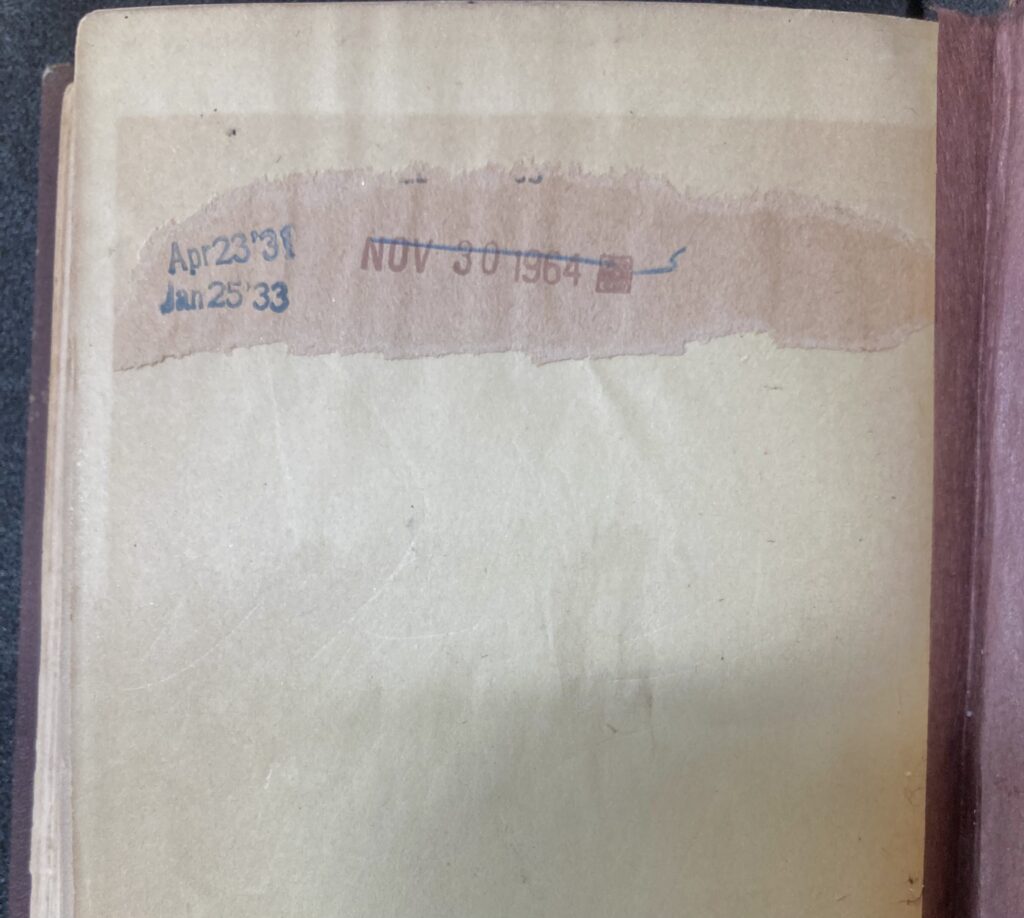
On the back end page of the book, a torn scrap provides a few dates that the book was checked out.
- April 23, 1931
- January 25, 1933
- November 30, 1964
MSU Students and Faculty Provenance
While part of the MSU library collection, borrowers marked up the book, highlighted passages and made notes. Without the missing library slip and most of the checkout dates, there is no way of knowing who exactly left each bit of provenance but it is still worth documenting even though they are currently dead ends.
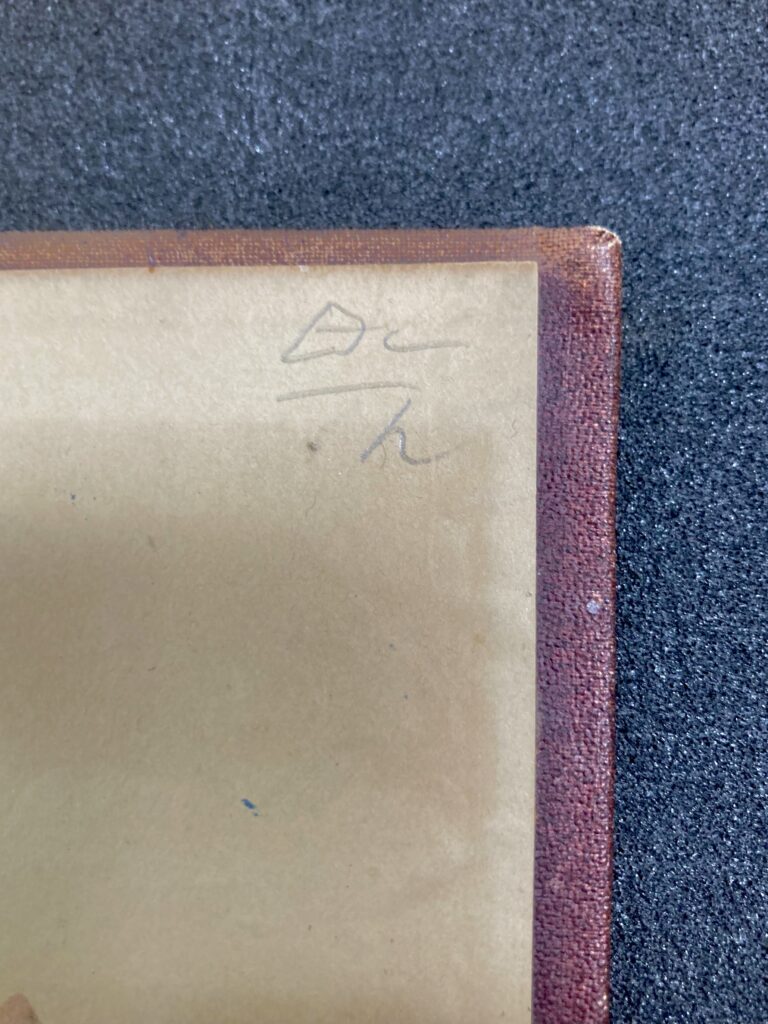
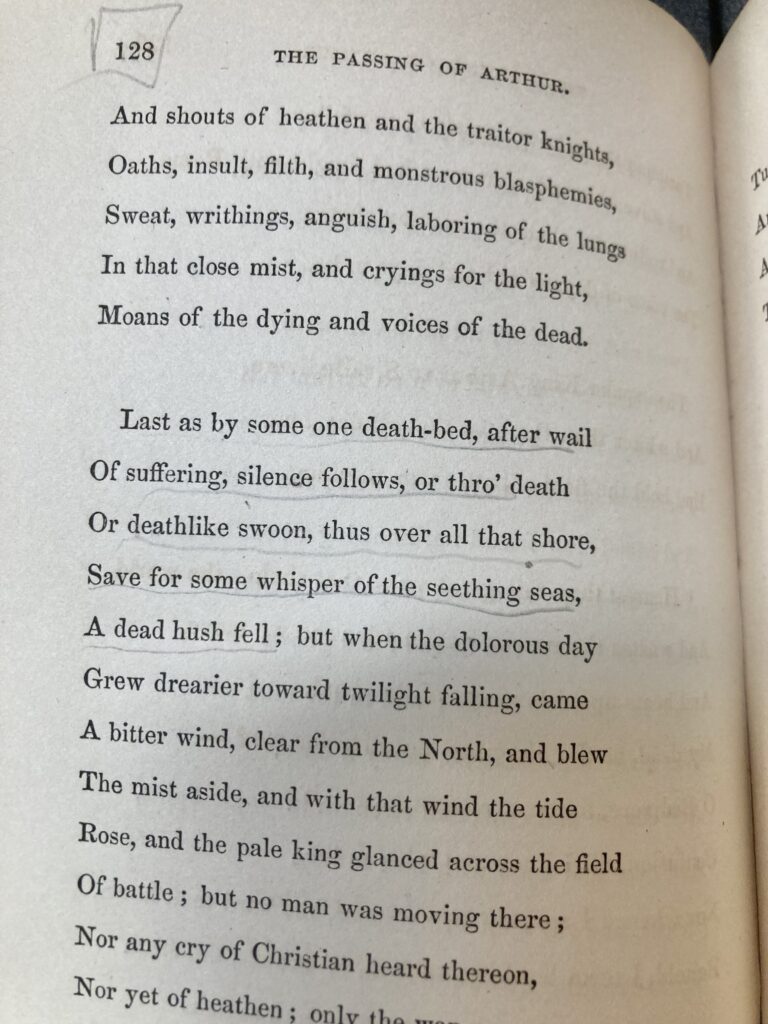
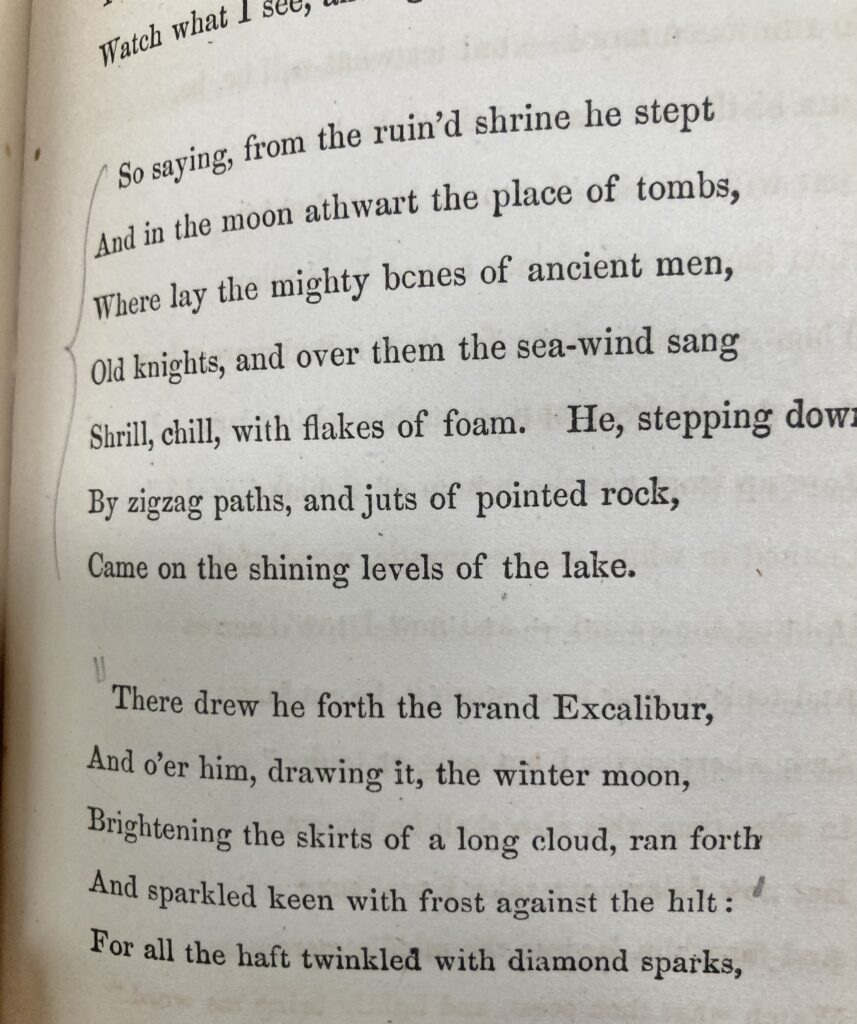
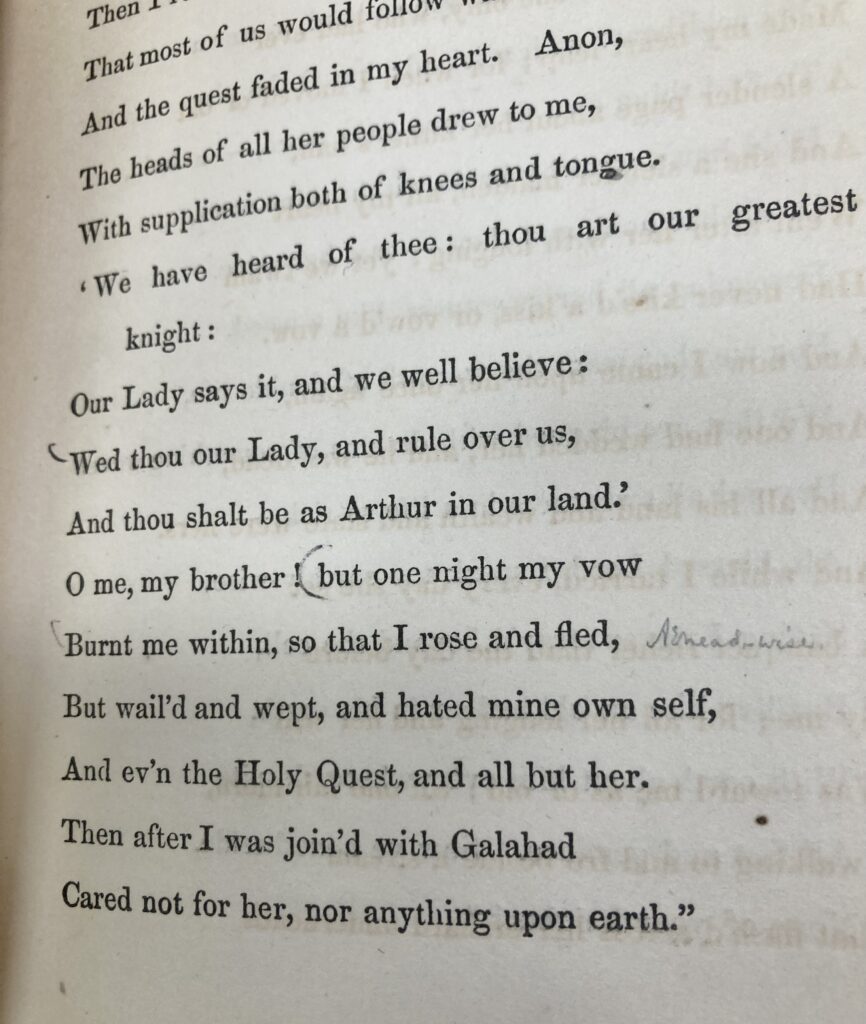
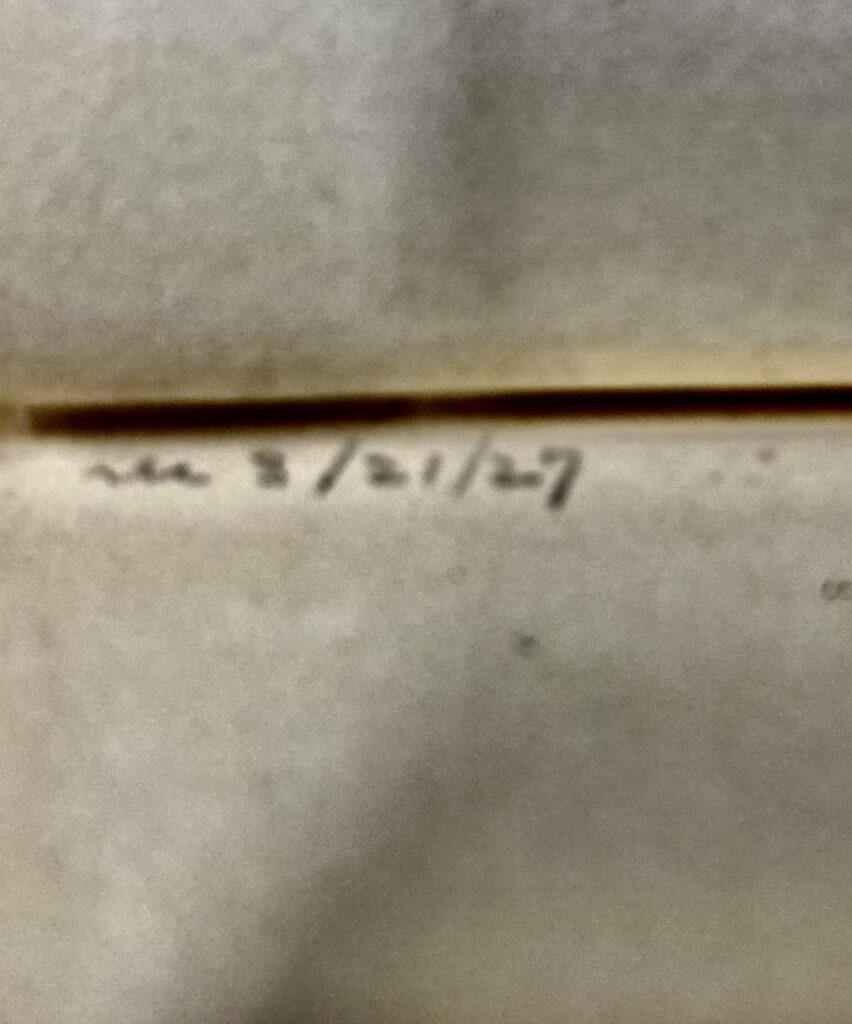
small writing made it hard to focus
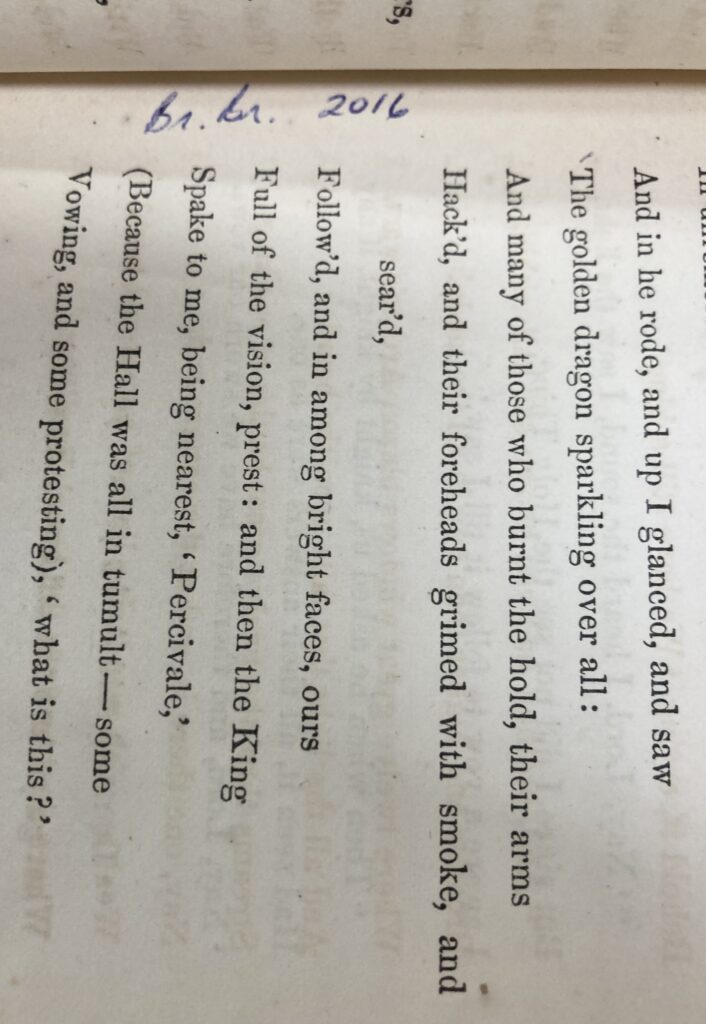
One common bit of provenance is wobbly pencil underlining of certain words and passages. The pencil and bad handwriting seem to match the possible initials, Dc/h, written on the inside of the back cover of the book.
Marks from other borrowers occur gave me much less to go in but some such as Aenead wise or Ahead wise might lead to something with enough googling. Possible reference to Aeneid but misspelled.
The last evidence of this book’s use is the date 2016 written in blue pen and possibly the first time it was taken off of the shelf in fifty years and presumably has something to do with special collections.
Sources
- Bulletin of Michigan State College of Agriculture and Applied Science
- Genealogy Trails
- The Living Age
- Theophilus Abbot Journals
- Theophilus Abbot, On the banks of the Red Cedar
- Tiknor and Fields
- Transcript, On the banks of the Red Cedar
- Welch, Bigelow & Co. History Cambridge
By Finnegan Riley, HST 475 History of the Book, Fall 2023